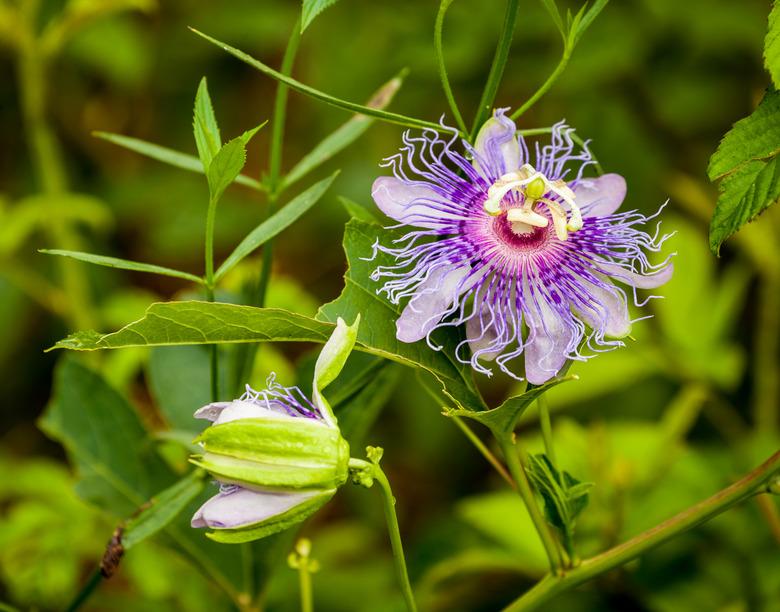Can You Harvest And Consume Passionflower?
Like some types of passion, the passionflower's life is brief. The flowers are flamboyant, but each one lives for only a day. They can produce green fruit that is edible but not delicious. Passionflower is also said to have medicinal uses and is used by Native Americans and by those interested in natural medicine to treat a variety of ailments.
Tip
Is passionflower safe and effective as a dietary supplement? This has not been studied extensively. Some types of passionflower plants are said to be toxic. However, this does not stop people from making tea from dried, crushed petals from the flowers.
Meet the Passionflower
The passionflower (Passiflora incarnata) is a trailing vine that grows fast and climbs a trellis or a fence with axillary tendrils. It is an evergreen perennial in warm winter climates but dies back in regions with cold winters. The plant is loved for its incredible flowers that are up to 5 inches across with bright purple petals covered by a wavy fringe of purple. The very center of the flower is also interesting, with a small yellow sac of pollen. Fruits appear after the flowers.
The plant is also called maypop based on the popping noise the oval fruits make if you step on them. The maypop is native to the Southeast of the United States, but it thrives in U.S. Department of Agriculture plant hardiness zones 5 through 9. It is cultivated in these zones as a climbing ornamental allowed to grow up a trellis or fence. It can be grown in cooler regions, but it dies back in winter.
Care for the Passionflower
If there was ever a blossom that screams "tropical," it has to be the passionflower, with its intricate blossom structure and its jewellike tones. However, the truth is very different. In the Southeast, you can see passionflower growing right beside the highway.
These native plants don't require kid-glove treatment to be healthy and vital. They are drought-tolerant but appreciate an occasional drink during the growing season. Plant them in well-draining soil and top with a loose mulch to keep the soil temperature down. Pruning is not necessary, but you can chop it back if you prefer a bushy growing habit.
Use Passionflower Medicinally
Passionflower has been used for centuries in folk medicine. It was used as a sedative by Native Americans and was carried back to Europe by Spanish explorers, where it became part of European folk medicine. The plant is promoted as a supplement for a variety of health issues ranging from anxiety to menopausal symptoms to hemorrhoids.
